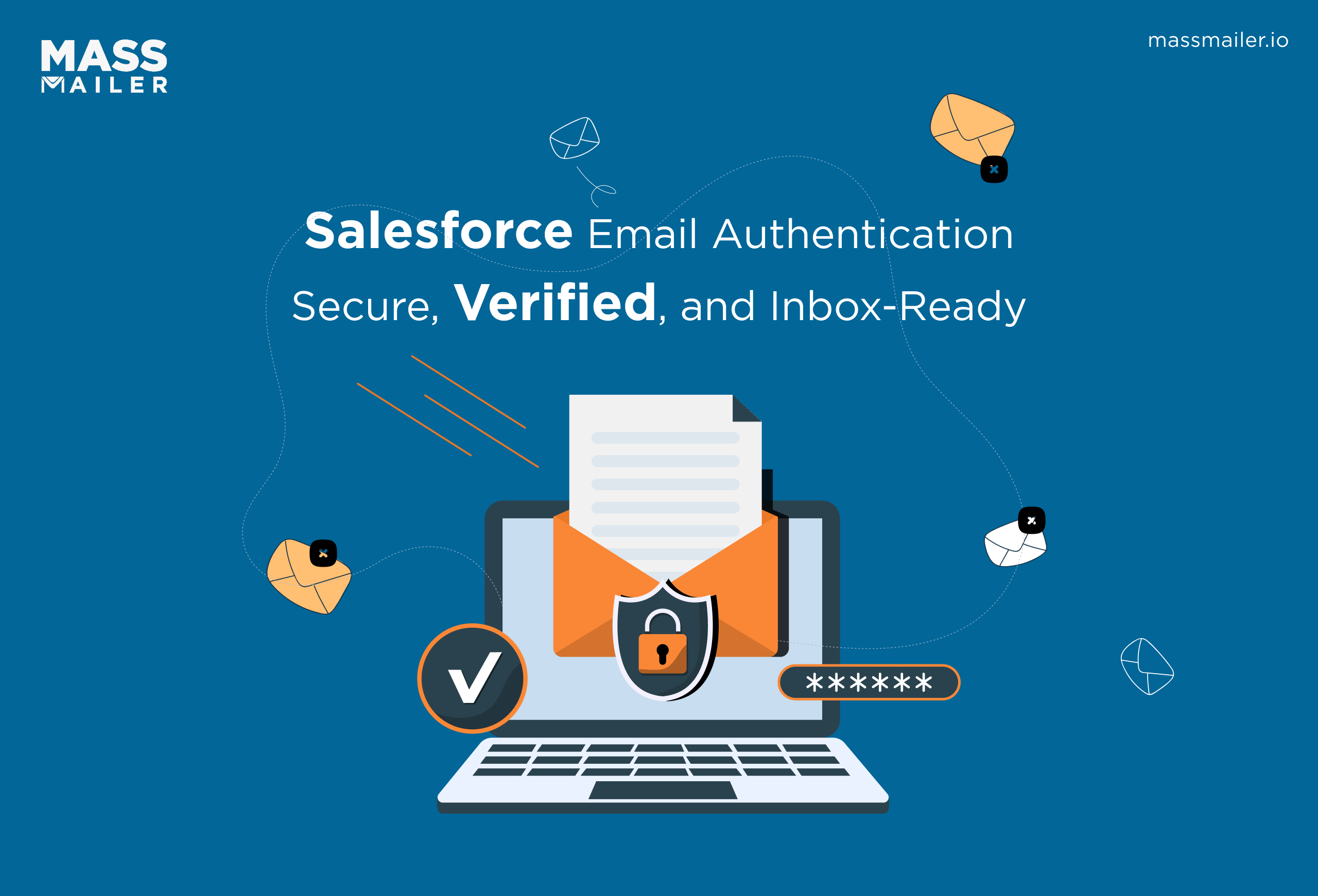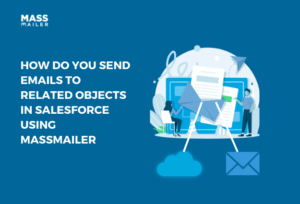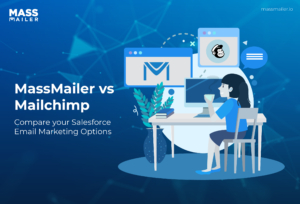Table of Contents
Email Prospecting (not the same as email marketing) is still one of the most effective ways of introducing customers to your brand. The email campaigns and prospecting campaigns, on average, often see a reply rate of 20% or higher.
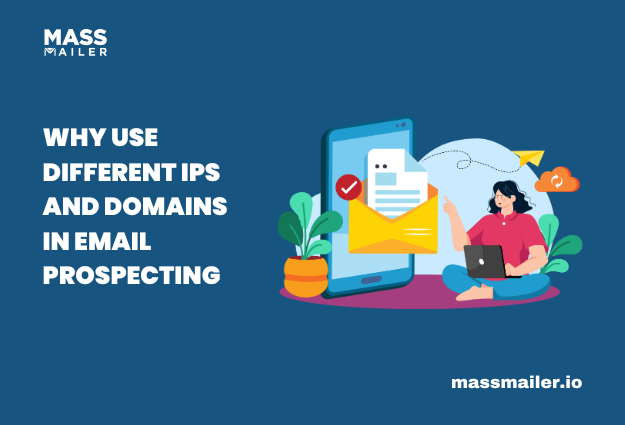
That said, one crucial factor that decides the effectiveness of an email prospecting campaign is deliverability. Your campaign will go nowhere if emails don’t even reach your target audience’s mailboxes, and this is where the concepts of IP and domain reputation come in.
This blog will examine these concepts in greater detail and explain why using various IPs and a different domain for your email prospecting campaigns is in your best interest.
IP And Domain Reputation In A Nutshel
If you have an email account (let us use Gmail as an example), you would have noticed that some emails, despite being promotional, go under the “Promotions” tab of your inbox while others go straight into your spam folder. When an email lands, it is determined by two major factors of the sender—their IP and domain reputation.
Let us look at these individually:
IP Reputation
The IP reputation of a sender is a measure of the trustworthiness of the IP they are sending emails from. This reputation is monitored by email providers who keep track of factors like:
- The number of spam complaints against emails originating from that IP.
- A high bounce rate.
- If emails from that IP are flagged as suspicious by individuals or network administrators.
If your IP reputation is poor, your email will be flagged as spam and will not work well for your email prospecting needs.
Domain Reputation
Just as with IPs, domain reputation relates to the reputation of the domain you’re sending emails from (e.g., yourbusinessname.com). The same factors that determine the trustworthiness of an IP address come into play here, too.
Using a domain with a positive history can significantly improve your campaign’s deliverability, while a domain with a poor reputation can cause emails to be marked as spam or blocked altogether.
Why Should You Use A Different IP And Domain For Your Email Prospecting Needs?
To understand the “why,” we need to understand the two main types of emails that businesses send out, i.e., promotional and transactional emails, as each type has a unique purpose, engagement level, and impact on IP and domain reputation.
Promotional (Non-Transactional) Emails
Promotional emails are sent to generate interest or engage potential and existing customers. They can include marketing emails, periodic newsletters, product launches, or event invites.
Due to their nature, these emails often experience low engagement rates and are, more often than not, deleted by recipients, which can negatively impact the sender’s IP and domain reputation.
Promotional emails are also required by law to have an unsubscribe option (which recipients opt for) and are often reported as spam. This further damages the sender’s credibility and impacts their overall deliverability, making it harder for future emails to reach inboxes.
Transactional Emails
Transactional emails, on the other hand, are operational in nature. These are emails that deliver essential updates like order confirmations, invoices, shipping notifications, and password resets and are often triggered or sent as a direct response to an action performed by the recipient.
As a result, transactional emails often have high engagement rates and are almost never flagged as spam or reported as suspicious. As a result, these types of emails help maintain a positive IP and domain reputation.
Why Should You Use A Different IP And Domain For Email Prospecting?
With the differences between the two types of email established, we can address the “why” of the topic.
Most businesses operate under a single domain. Sending transactional emails from your primary business IP and domain works in your favor due to their nature and high engagement rates.
But when you start sending promotional emails from this very business domain and IP, you run the risk of negative engagement or spam complaints, which will impact its reputation. This will impact not only the success of your email prospecting campaign but also the delivery of your essential transactional emails.
That is why it is essential to use different domains and IPs for email prospecting—any deliverability issues that affect promotional emails won’t interfere with critical transactional communications.
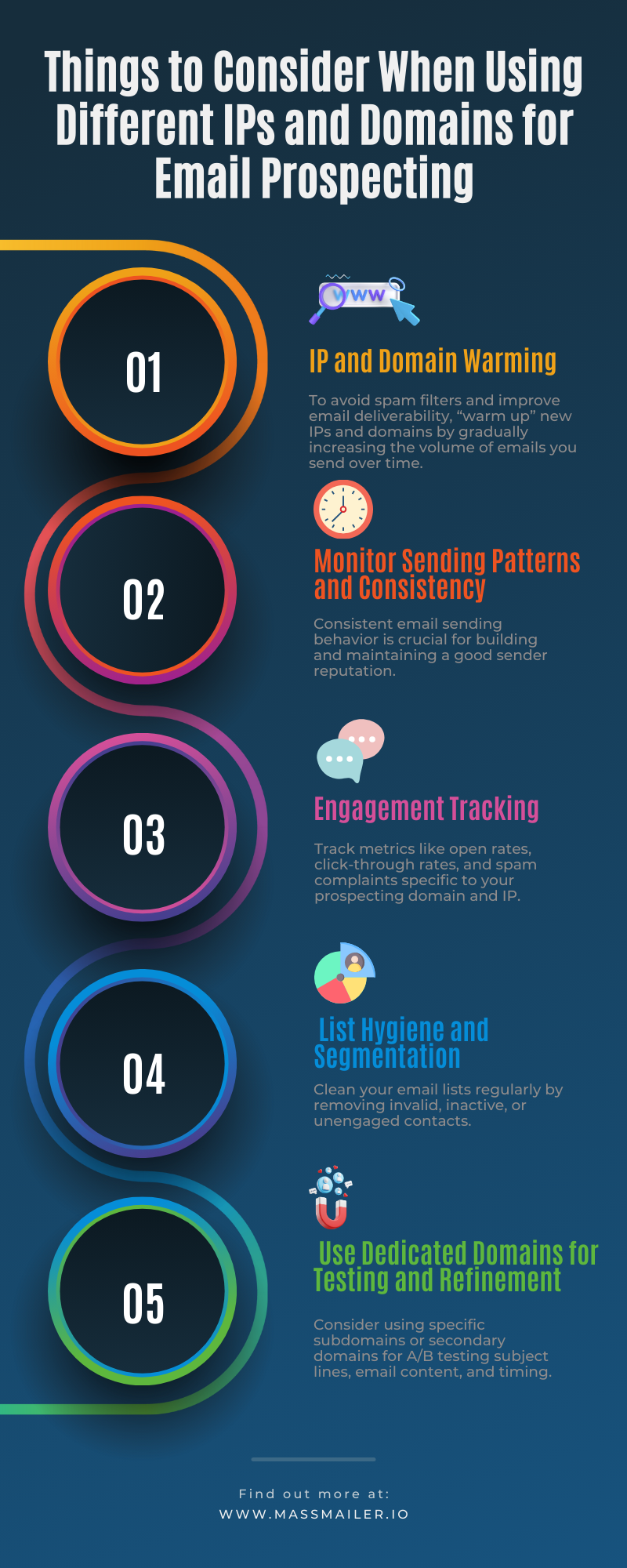
Things to Consider When Using Different IPs and Domains for Email Prospecting
Here’s a breakdown of a few critical aspects to keep in mind:
1. IP and Domain Warming
To avoid spam filters and improve email deliverability, “warm up” new IPs and domains by gradually increasing the volume of emails you send over time. This process helps establish trust with email providers, which are wary of new IPs and domains with high email volumes immediately. Start small and increase your sending frequency as your reputation builds.
2. Monitor Sending Patterns and Consistency
Consistent email sending behavior is crucial for building and maintaining a good sender reputation. Avoid sudden spikes in email volume, as this can signal spam-like behavior. Instead, maintain a steady, predictable schedule, especially when scaling up your prospecting campaigns.
3. Engagement Tracking
Track metrics like open rates, click-through rates, and spam complaints specific to your prospecting domain and IP. High bounce or complaint rates signal potential issues, while positive engagement helps improve reputation. This granular insight allows you to address deliverability problems proactively, safeguarding your primary IP and domain.
4. List Hygiene and Segmentation
Clean your email lists regularly by removing invalid, inactive, or unengaged contacts. High bounce rates or sending to disengaged recipients can harm your domain and IP reputation. Segmenting lists by audience type and engagement level can also improve deliverability and allow for more tailored prospecting strategies.
5. Use Dedicated Domains for Testing and Refinement
Consider using specific subdomains or secondary domains for A/B testing subject lines, email content, and timing. This strategy allows you to optimize campaigns without risking the reputation of your primary domain. Once effective tactics are identified, apply them across other prospecting efforts to increase engagement while protecting your main IP and domain.
How Does MassMailer Help Address This Issue Within Salesforce?
MassMailer provides a range of features within Salesforce to help businesses manage separate domains and IPs for promotional and transactional emails effectively. It allows you to use multiple domains for email prospecting. This setup safeguards your primary business domain from the potential impact of spam complaints or lower engagement rates that are synonymous with promotional emails.
MassMailer also supports the use of dedicated IP addresses for each domain, allowing you to customize and control the IP for each email type, along with the functionality to authenticate both domains and IP addresses. This flexibility enables you to create an IP pool where you can assign specific IPs to different domains at runtime.
For high-volume campaigns, MassMailer offers the ability to assign multiple IPs to a single domain, which distributes the email load and maintains a stable reputation. This feature allows you to confidently manage and maintain distinct reputations for both transactional and promotional emails, all within Salesforce, ensuring reliable email deliverability across campaigns.
Sign on for MassMailer’s 15-day free trial period to know what else MassMailer can do for you.
Start Your Free Trial Today
Experience MassMailer the easiest way to send personalized emails from Salesforce.
Related Blogs
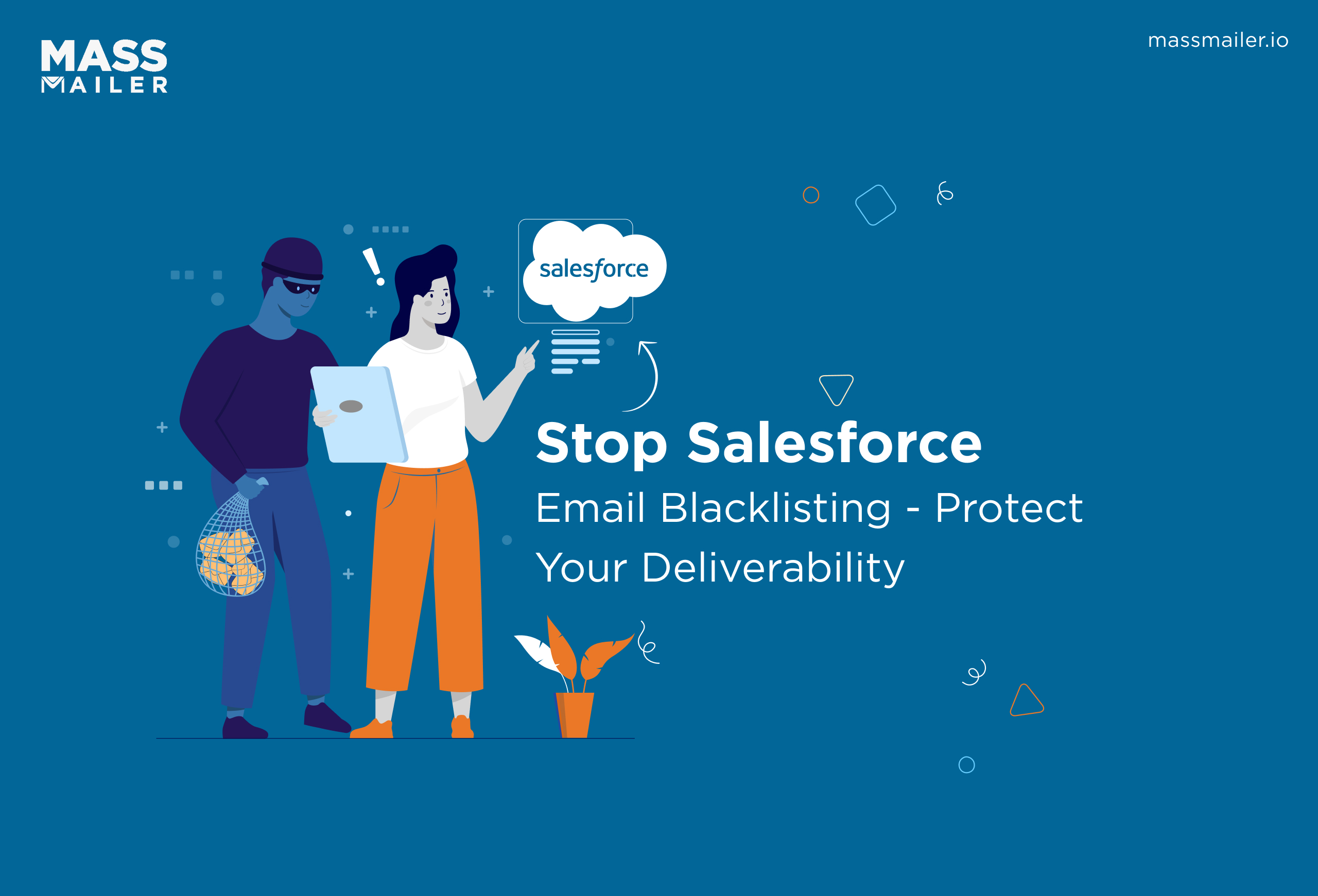
Salesforce Email Blacklist: Fix, Prevent, and Improve Deliverability

Salesforce Emails Going to Spam: Complete 2025 Deliverability Guide
MassMailer Resources


